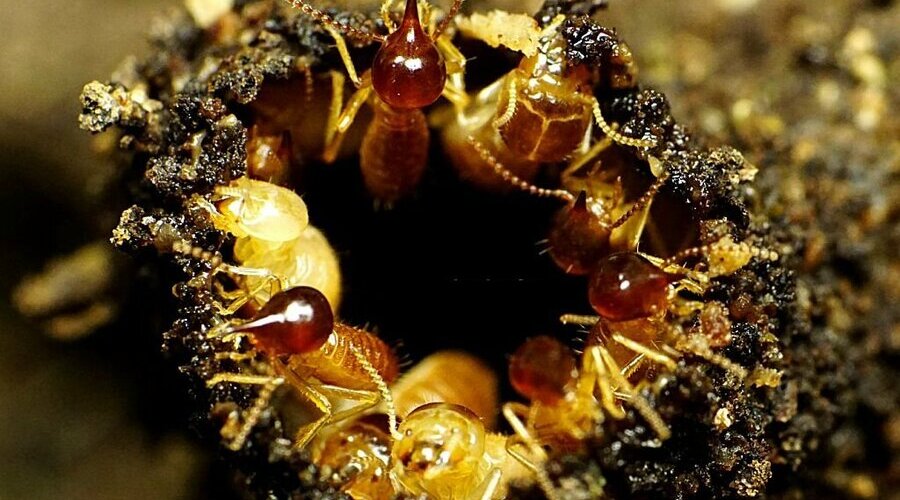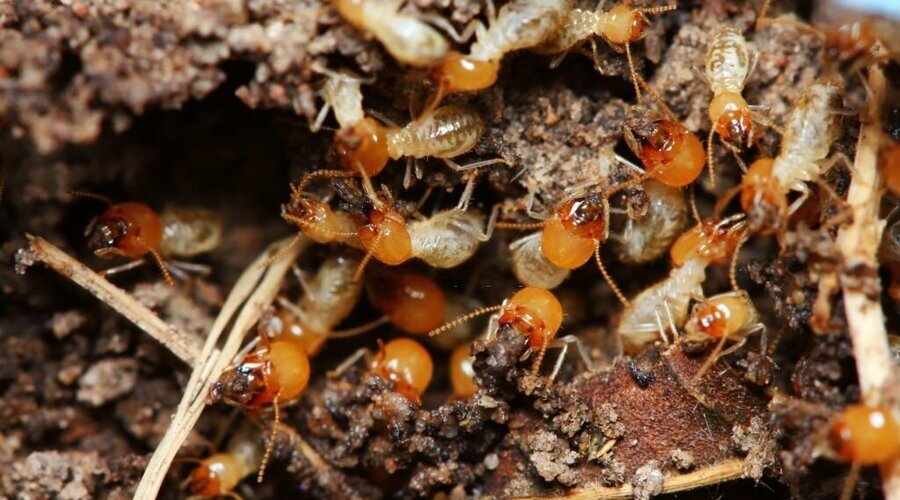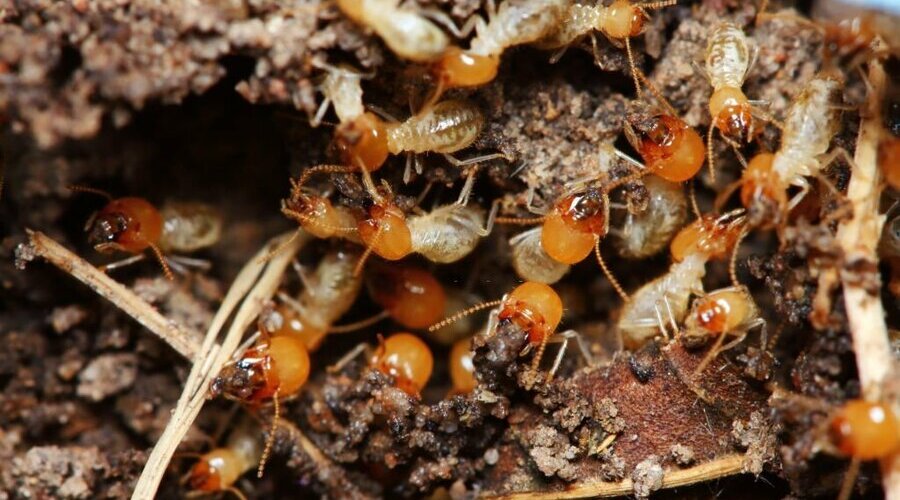11 Reasons Why a Termite Barrier is a Must-Have Defense
Termite Barrier for Long-Term Home Protection
Termites pose a serious threat to Australian homes built with timber construction materials.
Left unchecked, entire colonies of destructive pests can infiltrate properties and cause major structural damage.
Yet this devastating outcome can be prevented through proactive termite management using protective barriers installed by Experienced Pest Technicians.
Implementing solutions that meet Australian standards represents homeowners’ best defense to save their valuable investments from invasive attacks.
1. Termites Cause Billions in Property Damage Annually
In the US alone, termites cause over $5 billion in property damage every year. They damage around 600,000 homes each year across the country.
In warmer states like Florida and California where termites thrive, the threat is even higher. One study found termites infest more than 1.1 million homes in Florida alone each year.
With hundreds of billions of dollars in real estate at risk, termite barriers have become a necessary safeguard for homeowners in affected regions. Investing in a barrier can save you thousands down the road.
2. Termites Feast on Your Home in Secret
What makes termites so destructive is their ability to secretly infiltrate vulnerable homes and feast undiscovered for months or even years.
A termite colony can eat for a long time before any visible structural termite damage appears. And by then, they may have already compromised walls, flooring, roof beams, and other critical structural components.
Since termites prefer to stay hidden within the dark recesses of walls, attics, basement cracks, etc., visual inspections often fail to uncover termite activity. Getting a termite inspection using moisture meters, probes, and borescopes is the only reliable way to check for infestations.
And the best defense is still prevention with a comprehensive termite barrier.
3. Termites Thrive in Warm, Humid Climates
Temperature and moisture are critical to termite habitat and food supplies. So they thrive across the southern half of the US from Florida and Georgia stretching west to California.
States like Texas, Oklahoma, Arkansas, Louisiana, Mississippi, Tennessee, North Carolina and Virginia also have high termite pressure. But termites can be found as far north as Massachusetts depending on the species.
Unfortunately if you live anywhere in these warmer, humid states, termites pose a year-round threat to your home. Protecting your most valuable investment with a professional termite barrier is critical.
4. Termites Can Enter Through Tiny Cracks
One of the biggest misconceptions homeowners have about termites is that they require large entry points into a home.
In reality, termites can enter through extremely tiny cracks and crevices. If an opening is large enough for a credit card to slide through, then termites can get in.
Common entry points include small foundation cracks, gaps around plumbing penetrations, loose mortar joints, and tiny holes in exterior siding. This is why a complete “barrier” protection approach is necessary to seal vulnerable areas across the perimeter of a home.
5. There Are Multiple Termite Barrier Options
The good news is that modern barrier advancements have led to multiple reliable termite protection options for any home type and budget.
The two most common professional termite barrier options are:
Liquid Barrier Treatments
Liquids containing termicidal ingredients are trenched around the exterior foundation and injected into vulnerable interior entry areas. Usually performed upon initial construction.
Pros
- Lower upfront cost
- Broad protection across vulnerable entry areas
Cons
- Shorter lifespan of 5-10 years
- Potential contamination entering groundwater
Physical Barriers
Physical mesh screens, foam barriers, or granule barriers installed around vulnerable foundation areas. Usually installed upon new construction or remodeling.
Pros
- Longer lifespan of 10-20 years
- Prevent termite entry without chemicals
Cons
- Higher upfront installation cost
- Only protects areas where installed
Within both categories, there are basic options at lower price points and advanced options at higher price points based on materials used and thickness/density of the barriers.
6. DIY Barrier Options Don’t Work
You may be tempted to try and handle termite protection yourself with home improvement store products. However, DIY termite barriers don’t work well.
Here’s why:
- Requires trenching next to foundations which homeowners usually don’t want to dig up their landscaping and irrigation systems
- Difficult to properly apply liquid chemicals into confined areas like floor crevices
- Homeowner lacks proper equipment like chemical tanks, pumps and soil injection rods
- No way to get complete coverage across all vulnerable entry areas
- Poor chemical penetration performance compared to professional strength termiticides
At the end of the day, termite bait traps, sprays, and other DIY products are no match for a professionally installed barrier.
7. Adding a Barrier During Construction Costs Less
It will always be less expensive to have termites barriers installed during initial home construction compared to retrofitting an older existing home.
Why? Because the soil around the foundation hasn’t been fully backfilled and landscaped yet. This makes it easier for contractors to trench and treat the soil adjacent to the foundation perimeter.
Additionally, barriers can be seamlessly incorporated into framing and foundation construction methods without having to modify completed sections of the home.
If you’re building new construction, be sure to inquire about termite barrier options with your builder early in the design process.
8. Barriers Protect Outbuildings Too
Detached structures like garages, sheds, gazebos, and fencing provide attractive food sources for invading termites too.
So it’s important your termite barrier extends protection to these areas as well, not just your home’s foundation.
Depending on the square footage, some outbuildings may warrant their own independent barrier protection. Be sure to consider their inclusion when reviewing options with prospective termite control companies.
9. Annual Inspections Are Still Necessary
While termite barriers provide excellent preventative protection, they don’t eliminate the need for periodic inspections.
Termite threats still exist from neighboring property infestations. Also, barriers have a limited lifespan ranging from 5 to 20 years typically.
So it’s essential to get annual inspections to check for any termite activity or compromised barrier areas. Be sure to use a reputable company employing advanced moisture meters, probes, and scoping cameras during the inspection too.
If you do discover termites either within the home or outside through your inspections, the previous investment in barrier protection will likely reduce remediation costs.
10. Look for Referrals and Certifications when Hiring
Make sure any company you hire for termite barrier installation or inspection is properly certified and maintains insurance coverage.
Ideally, look for a company holding membership in established trade organisations like:
- National Pest Management Association (NPMA)
- State pest control associations
- Local Better Business Bureau (BBB) accreditation
NPMA offers the Termite Protection (TP) certification demonstrating advanced expertise specifically treating termites through barriers and soil treatments.
In addition to certifications, customer referrals can provide assurance you are working with a quality, reputable firm. Ideally, look for referrals from neighbors in your immediate area given localised termite threats.
11. Termites Can Infest Quickly If a Barrier Fails
Left unprotected without a barrier, it doesn’t take long for termites to infest and severely compromise a home’s structural integrity.
If a barrier fails or an area was left untreated, termites act swiftly to exploit the vulnerable entry point. And once inside your home’s wooden elements, they easily spread to frame walls, floors, and roofing rafters.
Before you know it, months and years have gone by with advanced deterioration happening right under your nose. By the time suspicious signs pop up like sagging floors or doors that don’t close properly, major underlying support damage has already taken place.
At that point fixing compromised structural sections involves major foundation repairs, beam sistering, floor joist reinforcement, and other costly construction intensive activities.
Frequently Asked Questions
What is the most effective solution for protecting against subterranean termites?
The most effective long term solution is getting a chemical termite barrier professionally installed around the home’s foundation. Also, this provides an impenetrable barrier against termite attacks.
Does a chemical treatment completely eliminate the risk of termite infestations?
No. While a properly installed chemical barrier provides excellent protection, surrounding termite colonies can still pose threats over time from neighboring properties. Regular inspections help detect potential issues early before costly damage occurs.
What conditions may impact the effectiveness of a termite barrier installation process?
The barrier’s long term performance relies heavily on proper installation and ideal environmental conditions. Also, for a chemical barrier, proper chemical concentration levels and penetration depth are critical to effectively repel termites.
Why are termites such a common threat for property owners on the Gold Coast and Sunshine Coast?
The warm, humid climate along with abundant timber construction materials create ideal conducive conditions for subterranean termites to establish large colonies. Without proper barriers, the risk of termite attack and costly damage is quite high.
Conclusion
Defending your valuable property against termite devastation requires proactive termite management utilising barriers that meet Australian standards.
Stopping infiltration early before an entire colony establishes itself, feasts on timber construction elements and causes major structural damage is absolutely essential.
Especially, in conducive environments along the Gold Coast area.
Investing in high quality termite barrier solutions remains the most reliable long term approach for homeowners and builders alike.



